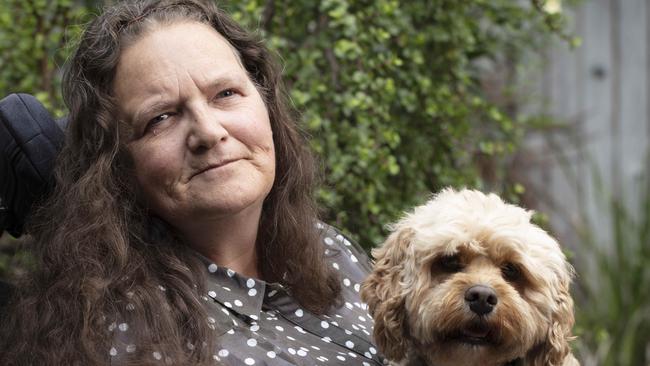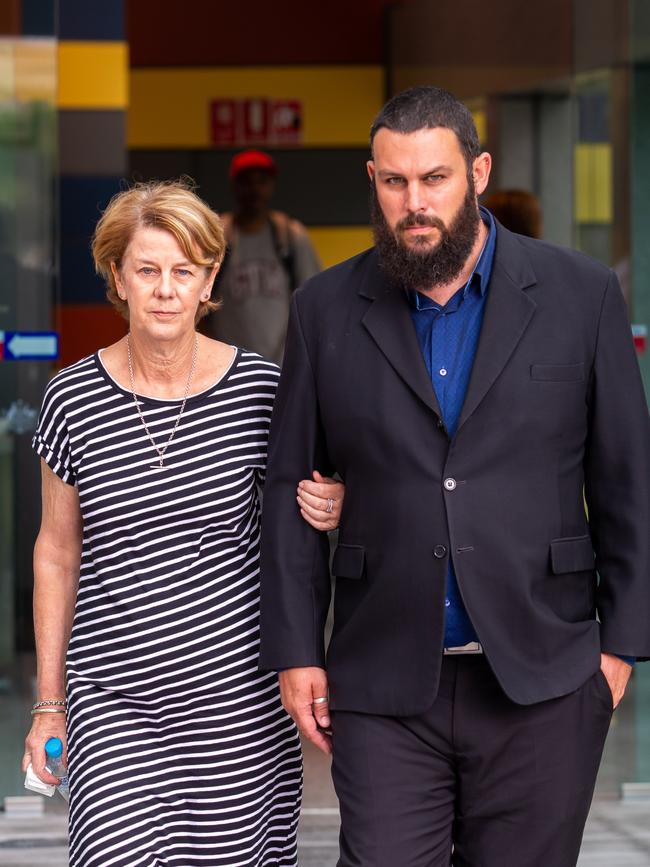Be ashamed, Australia, our elderly deserve better
The royal commission’s early findings are damning, highlighting a grim and shameful state of affairs.

“The hallmark of a civilised society is how it treats its most vulnerable people, and our elderly are often amongst our most physically, emotionally and financially vulnerable. Frail and elderly members of our community deserve to, and should, be looked after in the best possible way, and we intend to do our best to see that it happens.’’
Richard Tracey (deceased),
Aged-care royal commission chairman, in his opening address in January.
Barbara Spriggs was the very first witness to give evidence to the Royal Commission into Aged Care Quality and Safety. Back in February, Spriggs described in grave terms the treatment of her husband, Bob, at the Oakden Older Persons Mental Health Service in Adelaide in 2016. She outlined a litany of concerns, including overdoses of prescription medicine and bruising consistent with heavy restraint.
“In February, Bob was readmitted to Oakden,” she said. “After one week, we noticed a huge decline in his health. After our family expressed concerns at his deterioration, we left, but within an hour we were told he had been transferred to the Royal Adelaide Hospital. He had been overmedicated by being given 10 times the dose, 500mg instead of 50mg, of his prescribed anti-psychotic drug Seroquel. He was suffering severe bruising on several parts of his body, was dehydrated and suffering from pneumonia. To this day I don’t know what happened to Bob at Oakden.”

Spriggs testified to her frustration at being unable to obtain information about his condition, and at the lack of information and help she received from the aged-care complaints and inquiry regime.
It was a sombre start to the evidence at the commission, which ranged over the next 10 months from stories of physical abuse both by and on carers, of workforce shortages, of substandard care, of blame-shifting providers and of regulatory failure. The commission distilled evidence from more than 6000 written submissions, hundreds of stories at community forums and hundreds more in direct hearings, into its interim report provided to the government on Thursday.
It didn’t hold back.
“The royal commission has heard compelling evidence that the system designed to care for older Australians is woefully inadequate,” its report concluded.
“Many people receiving aged-care services have their basic human rights denied. Their dignity is not respected and their identity is ignored. It most certainly is not a full life. It is a shocking tale of neglect. The neglect that we have found in this royal commission to date is far from the best that can be done. Rather, it is a sad and shocking system that diminishes Australia as a nation.”
Some of the evidence it cited was beyond shocking. “We have seen images of people with maggots feeding in open sores and we have seen video and photographic evidence of outright abuse,” it said.
The report’s conclusion that the aged-care system is “cruel and harmful” will give millions of families pause for thought. About 1.2 million older Australians are supported through some form of government-funded aged care, either in-home or in a residential aged-care facility or nursing home. Many more are cared for by friends and family, who may be thinking that the physical and emotional demands are becoming too much and they will soon need to consider outside help.
People are entering the aged-care system at older ages, at higher levels of acuity, making the care required more intensive. The growing number of people in Australia with dementia (400,000 and projected to increase to 550,000 by 2030) will make care that much harder to deliver, bringing the issue of workforce training and qualifications to the fore. The commission found people were dying while waiting to receive the appropriate level of in-home care.

It is a difficult policy challenge, and a costly one. Federal Aged Care Minister Richard Colbeck said on Thursday that he was “shocked” by the commission’s interim findings and would use them as evidence to argue for more financial support in aged care. Scott Morrison was firmer on Friday, promising more aged-care funding by Christmas, to be outlined in the government’s mid-year economic and fiscal outlook.
The commission won’t issue its final report until November next year. It has committed to outlining “comprehensive reform and major transformation of the aged-care system”. But in the meantime it called out three areas where it said immediate action was needed.
First, it said greater funding was required to provide more in-home care to reduce the waiting list for those requiring higher levels of care at home. People receiving funding to have their house cleaned actually need help with more personal care, such as showering. Second, it called for action on the horrific overuse of chemical restraint in residential aged care, effectively drugging residents into a stupor so they are easier to handle. And third, it said the fact that 6000 people younger than 65 with disabilities were living among aged-care residents was unacceptable and had to be addressed.
Brenda Evans was one such person. Now living in a granny flat in Nerang on the Gold Coast, Evans lived in a nursing home for seven months in 2015. Suffering from multiple sclerosis and confined to a wheelchair, she was just 47 at the time.
“I was put in a respite room at the bottom of a flight of stairs. It was like a dungeon,” Evans tells Inquirer. “When the lift shut down at 7pm I was stuck there. I had no access to TV or radio, and I was effectively locked in. There was no rehabilitation for me or anyone else that I could see. After six weeks living there, you give up on life. Every day is a constant fight.”
Evans says she was made to feel less than her full self and was expected to socialise with a couple of other younger people with a disability, also in the nursing home. “We are not medically sick. We are just disabled. All people who live with disabilities live differently. Just because of my disability, it doesn’t mean I have to be friends with someone just because they have a disability. That’s like saying because you have brown eyes you are only allowed to talk to other people who have brown eyes.”
She was eventually supported out of the facility and into in-home care with the help of support agency YoungCare. Its chief executive, Anthony Ryan, called on the government on Friday to immediately adopt two targets accepted by the commission: that apart from exceptional circumstances, by 2022, no younger Australian should enter residential aged care; and none should be living in aged care by 2025. “Our passion is to give young people the choice that everyone deserves. In coming out so strongly, the royal commission gives a guide to what we all need to do to bring this about,” Ryan said.
The commission’s report identifies a broad range of areas where aged care is falling short, including a critical look at providers, regulators and workforce rules and regulations. It pays particular attention to the aged-care coalface — that is, care workers and their interaction with care recipients.
“We have heard about an aged-care workforce under pressure,” it says. “Intense, task-driven regimes govern the lives of both those receiving care and those delivering it. While there are exceptions, most nurses, care workers and allied health practitioners delivering care are doing their best in trying circumstances.”
“The aged-care sector suffers from severe difficulties in recruiting and retaining staff. Workloads are heavy. Pay and conditions are poor, signalling that working in aged care is not a valued occupation. Education and training are patchy and there is no defined career path for staff.”
“Hear, hear!” cries Jude Clarke, a veteran personal care worker of 46 years from just outside Perth. Clarke, 61, has been looking after people since she was 15 and still loves the job, despite its frustrations. She says so much has changed over her nearly five decades of care.
“These days we just have too little time,” she says. “We are stuck in front of computers filling out compliance forms to ensure the facility gets funded instead of being with the residents.
“We don’t get that chance to just sit with the residents, to hold their hand and to talk. It’s the part of the job I miss most. That offering of conversation is what keeps people happy, and if they’re happy they don’t get sick.”
Clarke says that if she had a policy magic wand it would be to ensure there was enough funding to ensure an adequate number of carers are looking after the residents. “Carers need safe working levels,” she says. “At the moment it’s not safe for us, and it’s not safe for them. It’s dangerous.”
Carolyn Smith, national director of aged-care workers’ union United Voice, says attracting and retaining aged-care staff is critical to the viability of the sector. “In our survey of 5000 workers released a fortnight ago, one in four said they plan to leave in the next five years,” Smith says. “Aged-care workers … have been speaking out about the chronic understaffing, chronic underfunding and the lack of time to provide quality care in our current system.”
The commission is critical of aged-care providers in its report, saying some who had appeared as witnesses were “defensive and occasionally belligerent in their ignorance of what is happening in the facilities for which they are responsible. Providers were reluctant to take responsibility for poor care on their watch.”
It is suspicious of the structure of aged care, saying aged care is not a true market in which the recipient is choosing between competitively marketed services. “Many older people are not in a position to meaningfully negotiate prices, services or care standard with aged-care providers. The notion that most care is ‘consumer directed’ is just not true.”
And it criticised the regulatory regime, now run out of the Aged Care Quality and Safety Commission, as “unfit for purpose”. “It does not adequately deter poor practices. Indeed, it often fails to detect them. When it does, remedial action is frequently ineffective.”
But it also calls out the broader citizenry for contributing to an atmosphere that pays older Australians too little heed, and care. “The language of public discourse is not respectful towards older people. Rather, it is about burden, encumbrance, obligation and whether taxpayers can afford to pay for the dependence of older people. As a nation, Australia has drifted into an ageist mindset that undervalues older people and limits their possibilities.”
The commissioners made a direct plea to all Australians. “This cruel and harmful system must be changed. We owe it to our parents, our grandparents, our partners, our friends. We owe it to strangers. We owe it to future generations. Older people deserve so much more.”




To join the conversation, please log in. Don't have an account? Register
Join the conversation, you are commenting as Logout